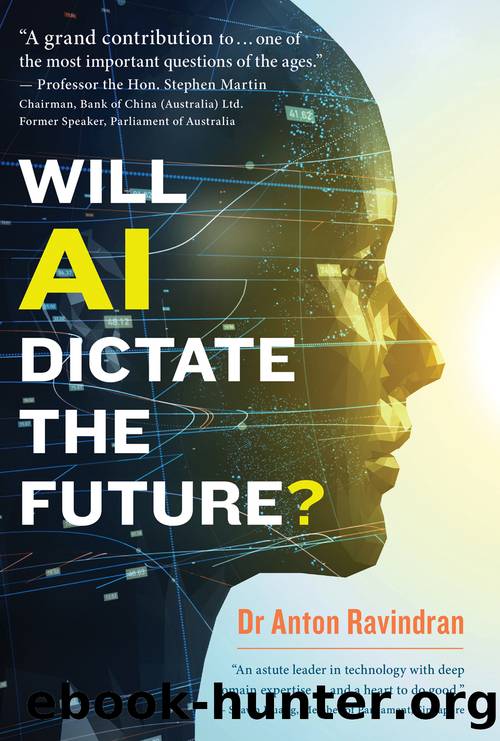Will AI Dictate the Future? by Ravindran Anton;

Author:Ravindran, Anton;
Language: eng
Format: epub
Publisher: Marshall Cavendish International (Asia) Private Limited
AI for Pathology and Radiology
Today, because of the advances in medicine, we can treat many more diseases. Nonetheless, even after many years in practice, medical professionals, including pathologists and radiologists, can still find it challenging to make the correct diagnosis and recommend the best course of treatment. Consequently, patients suffer, resulting in an increasing number of medical negligence lawsuits. According to Newman et al. (2019), an estimated 40,000 to 80,000 deaths occur each year in US hospitals related to misdiagnosis. And an estimated 12 million Americans suffer a diagnostic error each year in a primary care setting, 33% of which result in serious or permanent damage or death. AI has proven to be instrumental in diagnosing diseases expertly and in reading medical images far more accurately and quickly than the naked human eye.
Perhaps one of the most notable contributions of AI applications in medicine is medical imaging. Novel AI and DL models for pathology are a fascinating area of research and can help avoid mistakes by humans involved. These AI models extract information from volumes of medical images, including complex molecular and cellular structures of precise cancer lesions, determine genetic expression, identify the exact location and locate other anatomical objects and images that are difficult for the naked eye of a pathologist or radiologist to see. Studies have found that because of AI and DL algorithms, unnecessary biopsies and surgical excisions can be avoided. Because of AI applications, clinicians are now able to develop a better understanding of how tumours behave as a whole rather than basing treatment decisions on the analysis of a segment of the malignancy. AlexNet and GoogLeNet are two such tools for medical image classification. These AI algorithms are revolutionising the understanding of cancer histology and treatment. These tools can also bring down the cost of expensive specialist treatments as they can be used by general medical practitioners âanytime, anywhereâ, as they become pervasive.
Download
This site does not store any files on its server. We only index and link to content provided by other sites. Please contact the content providers to delete copyright contents if any and email us, we'll remove relevant links or contents immediately.
Algorithms of the Intelligent Web by Haralambos Marmanis;Dmitry Babenko(8589)
Test-Driven Development with Java by Alan Mellor(7572)
Data Augmentation with Python by Duc Haba(7462)
Principles of Data Fabric by Sonia Mezzetta(7221)
Learn Blender Simulations the Right Way by Stephen Pearson(7148)
Microservices with Spring Boot 3 and Spring Cloud by Magnus Larsson(6975)
RPA Solution Architect's Handbook by Sachin Sahgal(6377)
The Infinite Retina by Robert Scoble Irena Cronin(6081)
Hadoop in Practice by Alex Holmes(6055)
Jquery UI in Action : Master the concepts Of Jquery UI: A Step By Step Approach by ANMOL GOYAL(5911)
Big Data Analysis with Python by Ivan Marin(5839)
Life 3.0: Being Human in the Age of Artificial Intelligence by Tegmark Max(5447)
Pretrain Vision and Large Language Models in Python by Emily Webber(4796)
Infrastructure as Code for Beginners by Russ McKendrick(4577)
WordPress Plugin Development Cookbook by Yannick Lefebvre(4286)
The Age of Surveillance Capitalism by Shoshana Zuboff(4192)
Functional Programming in JavaScript by Mantyla Dan(4171)
Embracing Microservices Design by Ovais Mehboob Ahmed Khan Nabil Siddiqui and Timothy Oleson(4064)
Applied Machine Learning for Healthcare and Life Sciences Using AWS by Ujjwal Ratan(4045)
